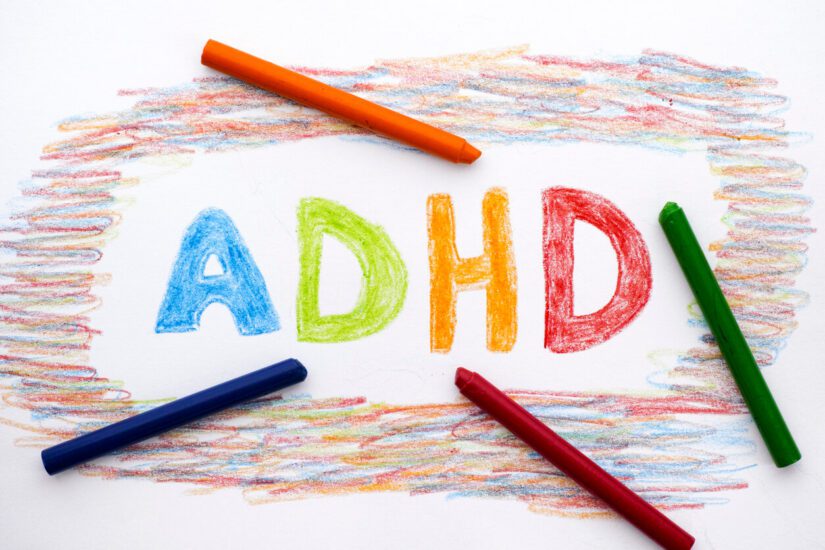In the United States, an estimated 11% of children have been diagnosed with ADHD — that’s almost 6.5 million kids. The rate of diagnosis has increased steadily over the years and shows no sign of slowing down. But there are still a great many misconceptions about the disorder, so let’s see if we can clear some up.
What’s the difference between ADHD and ADD?
Actually both terms describe the same thing. The main thing is that ADD is an old, outdated term that is not really used anymore. Originally, the term ADD described a person who was inattentive but not hyperactive, but in 2013 the Diagnostic and Statistical Manual of Mental Disorders, volume five (DSM-V) replaced ADD with ADHD, while expanding the definition to include multiple types. In other words, junk the term ADD.
What exactly is ADHD?
It’s important to remember that current thinking as regards many childhood disorders like ADHD and autism is that we now recognize that all exceptionalities affect different people in different ways. It’s no longer about stereotyping, it’s about trying to understand how something like ADHD affects the individual, because no two people are affected in exactly the same way.
Broadly speaking, there are three types of ADHD:
-
Inattentive: as the name suggests, this describes someone who has trouble focusing, or who is easily distracted (or both). This person is not, however, hyperactive or prone to impulsive behavior.
-
Hyperactive: hyperactivity is a tendency to constantly need to move and be active, even when doing so is disruptive. It also denotes someone who is overly impulsive. At the same time they are not inattentive.
-
Combined: Someone who combines the symptoms of inattentiveness, hyperactivity and impulsivity.
As you can see, there are many ways a person might behave with an ADHD diagnosis, so don’t make any assumptions.
What causes ADHD?
As with so many childhood disorders, no one really knows what causes ADHD. Some things are known; for example it runs in families, so that someone who has ADHD has around a 50-50 chance of having a child with it. This suggests a genetic component. However studies suggest that environmental influences play a role, with odds of developing ADHD apparently increasing with exposure in utero to substances like cigarettes, alcohol, PCBs or lead. It may also be connected to low birth weight, premature birth or even head injuries. In other words the science suggests many possibilities but nothing solid as yet.
Whatever the cause (or causes), ADHD seems to affect the chemistry of the brain, including neurotransmitters. Certain parts of the brains of people with ADHD may also be smaller than those without it.
What is the treatment for ADHD?
Previously, there was really only one form of treatment for ADHD: Medication. Specifically, in the case of children, stimulants such as Ritalin or Adderall. One might think it strange to prescribe stimulants to youngsters who may have trouble sitting still and focusing, but stimulants in children tend to have the opposite effect than in adults — it calms them down. It should be noted that not every child with ADHD is prescribed medication. As with the disorder itself, responses to drugs may vary according to the individual. There are also side effects, which can sometimes be difficult to bear. Also parents can be very resistant to giving medication to their kids, even though these stimulants are generally considered safe.
Nowadays, most doctors recognize that medication alone is only a partial solution; a course of treatment usually includes psychotherapy as well. The focus here is behavior modification, helping the child understand ADHD and how best to adjust to its effects. Parents are often urged to undergo therapy as well, to help them cope with the new challenges they will face.
Does ADHD mean my kid can’t have a happy life?
Most definitely not! Kids with ADHD are still human beings capable of great achievement and great happiness. In fact, ADHD can be a source of strength, as one effect of the disorder may be something called “hyperfocus.” This means that someone with ADHD can devote phenomenal amounts of attention and energy toward a task or goal that really interests them. Some studies find that a large percentage of successful entrepreneurs have ADHD. Even the impulsiveness sometimes associated with ADHD can be a great benefit, allowing a certain amount of daring.
ADHD can lead to many struggles for a young person trying to get through school — sitting still in class, paying attention to lectures, behaving according to expectations that can be difficult to meet, all of these can present many challenges. But once school is done, people with ADHD, in full knowledge of how their mind works and what sort of situations suit them best, can indeed find success and happiness.


